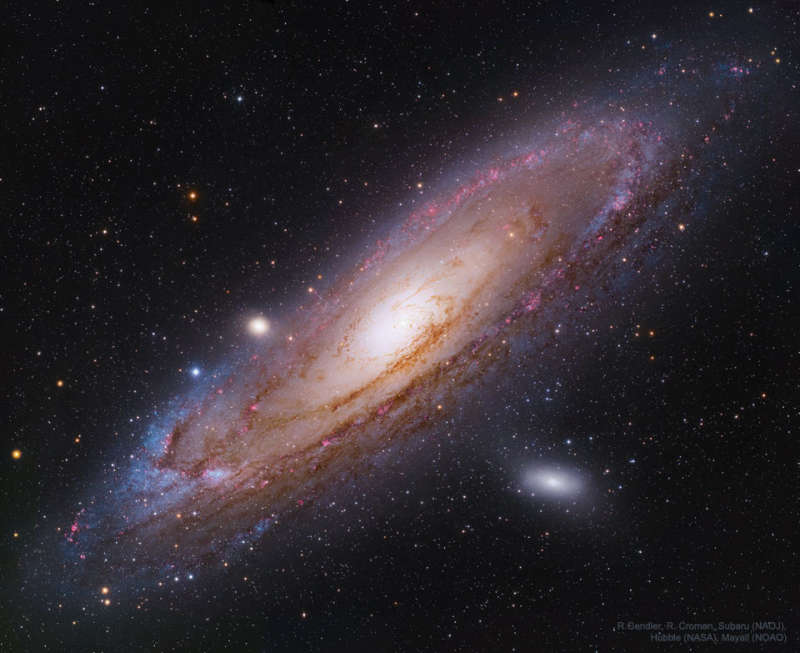Credit & Copyright: R. Gendler &
R. Croman
Explanation:
The most distant object easily visible to the unaided eye is
M31,
the great Andromeda Galaxy.
Even at some two and a half million
light-years distant,
this immense spiral galaxy -- spanning over
200,000 light years -- is visible, although as a faint, nebulous cloud in the
constellation
Andromeda.
A bright yellow nucleus, dark winding
dust lanes, and
expansive spiral arms dotted with
blue star clusters and
red nebulae,
are recorded in
this stunning telescopic image
which combines data from
orbiting Hubble with ground-based images from
Subaru and
Mayall.
In only about 5 billion years, the Andromeda galaxy may be even
easier to see -- as it will likely span the
entire night sky -- just before it
merges with, or
passes
right by, our
Milky Way Galaxy.
Teachers & Students:
Ideas for using APOD in the classroom
1999 2000 2001 2002 2003 2004 2005 2006 2007 2008 2009 2010 2011 2012 2013 2014 2015 2016 2017 2018 2019 2020 2021 2022 2023 2024 2025 |
Yanvar' Fevral' Mart Aprel' Mai Iyun' Iyul' Avgust Sentyabr' Oktyabr' Noyabr' Dekabr' |
NASA Web Site Statements, Warnings, and Disclaimers
NASA Official: Jay Norris. Specific rights apply.
A service of: LHEA at NASA / GSFC
& Michigan Tech. U.
|
Publikacii s klyuchevymi slovami:
Andromeda galaxy - Tumannost' Andromedy - M 31
Publikacii so slovami: Andromeda galaxy - Tumannost' Andromedy - M 31 | |
Sm. takzhe:
Vse publikacii na tu zhe temu >> | |
